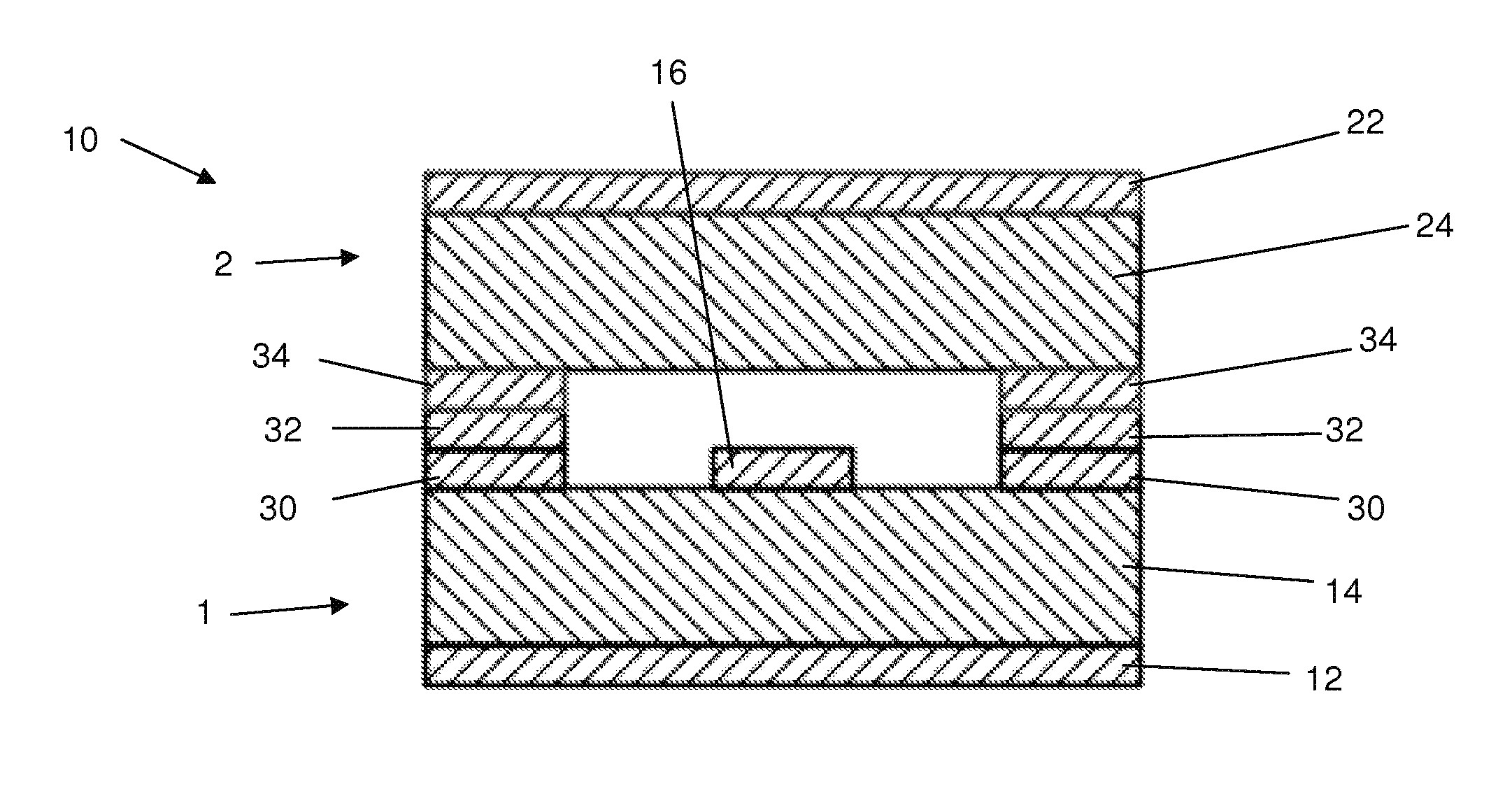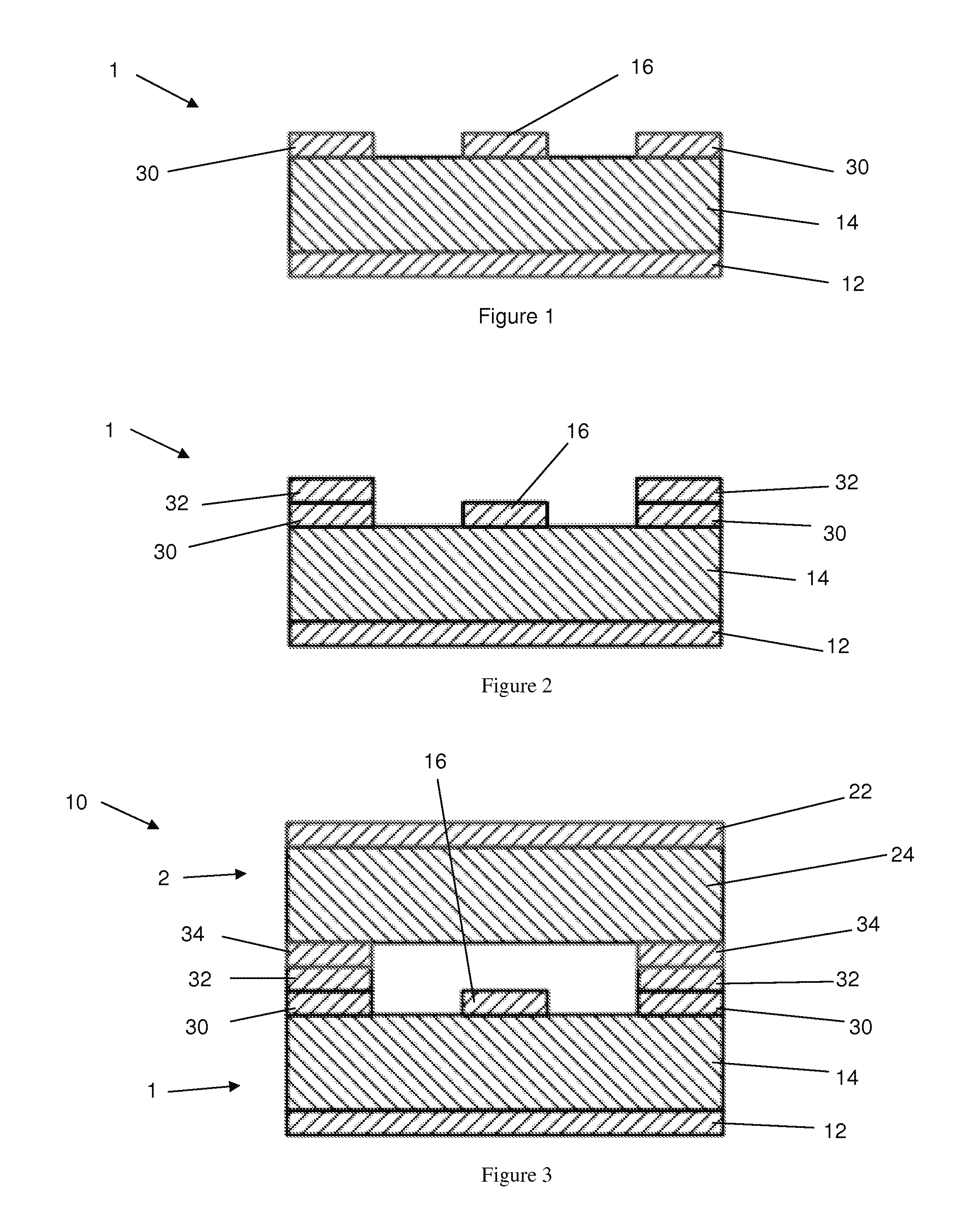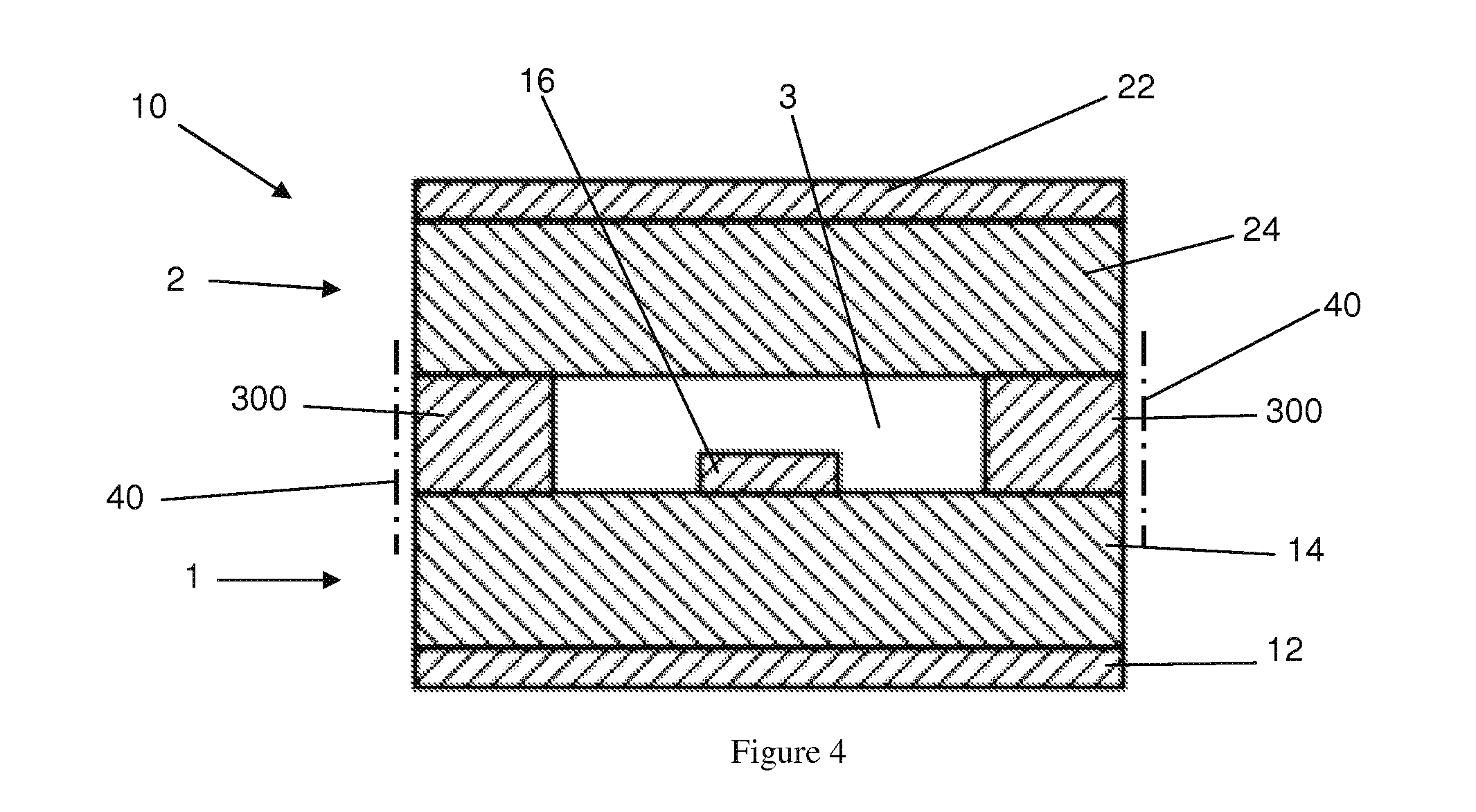Laminated Ceramic RF Assembly
a technology of rf assembly and ceramics, applied in waveguides, electrical equipment, antennas, etc., can solve the problems of laminate materials having a tendency to warp and stretch, copper clad laminates having inferior manufacturing tolerances to alumina ceramic materials, and dielectric loss of laminate materials, etc., to achieve simple filter topologies, less alignment errors, and faster time to market
- Summary
- Abstract
- Description
- Claims
- Application Information
AI Technical Summary
Benefits of technology
Problems solved by technology
Method used
Image
Examples
Embodiment Construction
[0023]Reference will now be made in detail to the present exemplary embodiments of the invention, an example of which is illustrated in the accompanying drawings. Wherever possible, the same reference numbers will be used throughout the drawings to refer to the same or like parts. An exemplary embodiment of the stripline structure of the present invention is shown in FIG. 3, and is designated generally throughout by reference numeral 10.
[0024]Referring to FIG. 1, a cross-sectional view of a unit 1 with a pre-fired substrate 14 having printed artwork and a base metallization layer disposed thereon. Specifically, a transmission line structure 16 is disposed on one side of the pre-fired substrate and a ground metallization layer 12 is disposed on the opposite side of the pre-fired ceramic substrate 14 (forming a first unit 1). The bond layer 30 of metallic material is disposed around the periphery of the transmission line structure 16 in a 4-10 μm metal layer using a thick film process...
PUM
| Property | Measurement | Unit |
|---|---|---|
| thickness | aaaaa | aaaaa |
| conductive | aaaaa | aaaaa |
| mechanical | aaaaa | aaaaa |
Abstract
Description
Claims
Application Information
 Login to View More
Login to View More - R&D
- Intellectual Property
- Life Sciences
- Materials
- Tech Scout
- Unparalleled Data Quality
- Higher Quality Content
- 60% Fewer Hallucinations
Browse by: Latest US Patents, China's latest patents, Technical Efficacy Thesaurus, Application Domain, Technology Topic, Popular Technical Reports.
© 2025 PatSnap. All rights reserved.Legal|Privacy policy|Modern Slavery Act Transparency Statement|Sitemap|About US| Contact US: help@patsnap.com



